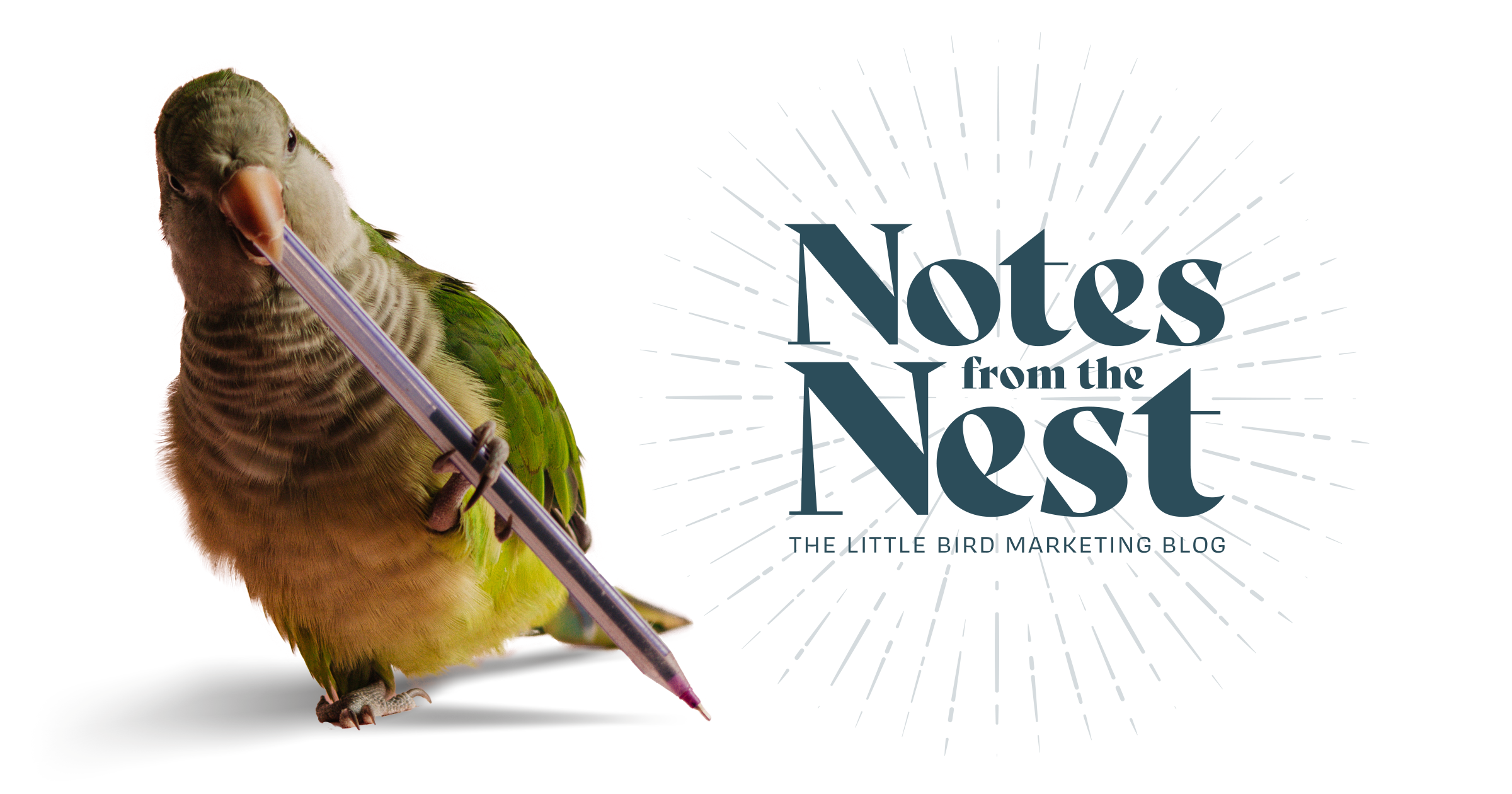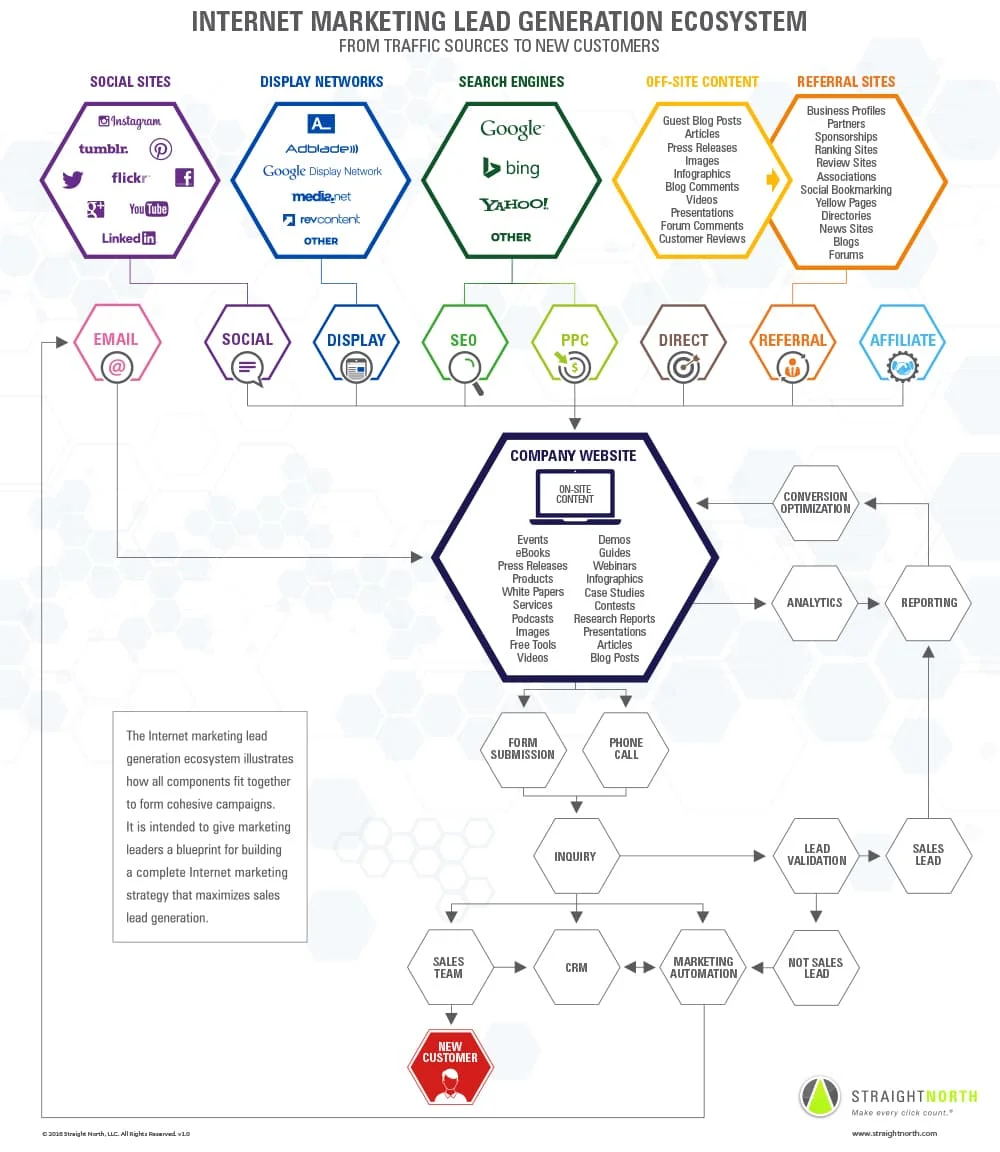Building an online marketing campaign can feel like putting together a jigsaw puzzle in the dark. It can be challenging not only to know everything you need for one, but also to know how all the pieces fit together. You want to be sure that the lead generation campaign you assemble has all the right pieces in place and is working in harmony to deliver the best possible results. However, this can be easier said than done, especially considering how complex these campaigns can be. Lead generation campaigns need to be built to draw in the widest selection of potential customers. This means they need to have components that will appeal to each type of unique visitor your site may attract.
Today, I've asked my colleague, Brad Shorr, Director of Content Strategy at Straight North to offer important insights. Enjoy this expert perspective along with a very informative infographic:
Here at Chicago-based Internet marketing firm Straight North, we’ve spent a lot of time working to understand what makes the most successful campaigns work. We’ve dissected them, examined the key components, and developed an infographic that we’ve used as an internal training tool for our professionals. This diagram illustrates what we describe as the ecosystem of Internet marketing lead generation. This infographic can help online marketers visualize their campaigns and make it easier to assemble a campaign that has all the functional components necessary to attract the widest possible base of potential customers.
For example, many visitors come to a website to do research because they are already reasonably sure that they require a specific product or service. For those visitors, customer testimonials can be powerful content that can inspire them to become customers themselves. Other visitors may be curious about a business and want to know if they should patronize it. These casual visitors are more likely to be swayed by high-impact content such as dynamic videos or informative graphics. Some visitors may not even know they need a company’s services until they see a well-crafted social media post shared by a friend or colleague.
Because there are so many types of website visitors who could be converted into customers, there are just as many types of content and components a lead generation campaign needs to convert them all. That’s why it can be extremely important to have a blueprint such as the illustration we’ve created.
For example, the purple hexagon at the top of the chart encompasses social media sites such as Twitter, Facebook and LinkedIn. Social media posts you’ve created are shared by people, exposing potential customers who may not have been aware of your business before. Once their interest is piqued, those people may visit your company’s website. There, you should have numerous opportunities to make a strong impression on those potential customers. Whether those people are hooked by a customer testimonial, a video describing your company, or an authoritative blog post you’ve written, they may then be driven to reach out to you through a phone call or an online form submission. From there, those inquiries are passed to your sales team — or directly to you — and you may end up with new customers. If not, their information can be added to your email list, giving you an opportunity to connect with those customers another time.
Using the infographic as a blueprint can help you and your company assemble a campaign that ensures you will be reaching out to every type of new customer. Whether you’re building such a campaign from the ground up or working to optimize an existing one, this diagram of the lead generation ecosystem can be a very useful tool. A lead generation campaign still is something of a jigsaw puzzle, but with the right guidance you won’t be left to put it together in the dark.
Author Bio:
Brad Shorr is Director of Content Strategy at Straight North, an Internet marketing agency that specializes in SEO, PPC and web design services. With more than 25 years of sales and marketing experience, Brad has been featured in leading online publications including Forbes, Moz and American Marketing Association.







Let Us Know What You Thought about this Post.
Put your Comment Below.